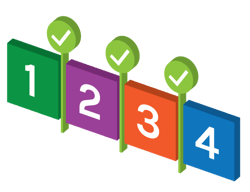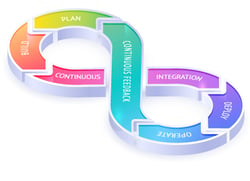 The rise in global demand for products, along with the sophistication of software embedded within the hardware, means that the product world is starting to shift. Manufacturers can no longer spend years developing prototypes before testing them on the market—that method is no longer viable in terms of finances and time. Instead, companies are looking for ways to test ideas sooner, build products quicker, and reduce financial risks.
The rise in global demand for products, along with the sophistication of software embedded within the hardware, means that the product world is starting to shift. Manufacturers can no longer spend years developing prototypes before testing them on the market—that method is no longer viable in terms of finances and time. Instead, companies are looking for ways to test ideas sooner, build products quicker, and reduce financial risks.
One approach that aims to solve the traditional obstacles of product planning is the Agile Planning Approach or Enterprise Agile Planning.
What Does Agile Mean?
The word agile means to move quickly. In terms of product development, the concept is the same. The goal is to plan and test products and their components frequently to find problems early on in the development lifecycle and resolve them quickly for the next iteration. This way, the product manager ensures that only the most optimized products are released to the market.
What Are the Benefits of Agile Planning?
 Companies adopt agile frameworks because it reduces the work needed to get a project off the ground. Agile planning is also flexible as it allows for changes from the product ideation stage to the product launch, allowing continuous improvements to be made.
Companies adopt agile frameworks because it reduces the work needed to get a project off the ground. Agile planning is also flexible as it allows for changes from the product ideation stage to the product launch, allowing continuous improvements to be made.
Agile planning offers several advantages that help to promote business agility:
- Greater flexibility in the development process
- Easier to adapt the product to meet market changes over time
- Better use of resources - time and capital
- Greater opportunity for collaboration between multiple teams
- Shorter time to market
Built-in checkpoints at each stage allow for reflection.
- Are we in the right market?
- Are we building the right product?
- What changes can we make to improve the product-market fit?
What Is the Stage-Gate Method?
 To understand the contrast between agile planning and stage-gate methods, let's look at the process involved in the more traditional product development path.
To understand the contrast between agile planning and stage-gate methods, let's look at the process involved in the more traditional product development path.
Develop the Idea
With stage-gate methodology, a product idea is developed based on extensive market research in the early stages, using focus groups, surveys, and direct observation techniques to find the right product-market fit.
Get Approval
Once the product is defined and the key features established, a product manager will submit the idea to the company executives and finance departments for approval.
Build the Roadmap and Create the Teams
After the idea is approved, product managers begin outlining the product plan while project managers find the right teams to build the prototype.
Build the Prototype
The product teams will build a complete prototype before testing it with real users. This process can take years to complete.
Iterating the Product
The fully finished product is submitted for testing and review. Due to the lengthy timelines to develop the product, any necessary iterations are limited, making it difficult to make dramatic changes before launching it to the market.
Why Use Enterprise Agile Planning?
 With agile planning, the entire process is more flexible, allowing for adaptations and changes at numerous points in the development process, even as it approaches the launch schedule. Here's how agile planning makes it happen.
With agile planning, the entire process is more flexible, allowing for adaptations and changes at numerous points in the development process, even as it approaches the launch schedule. Here's how agile planning makes it happen.
Building the Minimum Viable Product
With agile, the focus is on creating a minimum viable product (MVP) to model and test only the most important features before progressing with the prototype. Each feature is developed in stages, with user feedback a vital component at each stage.
By iterating the product from the MVP to the finished model, you can consistently improve the product as you go. This saves both time and money compared with waiting to iterate only after the product is completely built.
How to Use Enterprise Agile Planning
For many organizations, shifting from a traditional stage-gate method to an agile process is challenging. For this reason, many product managers adopt agile practices gradually by using development tools to assess the entire organization. They use these tools to take a high-level view of their product portfolio and to drill down to gain key insights. This allows a product manager to make informed decisions by:
- Understanding their product line better
- Identifying opportunities for new products
- Updating or discarding older products
Development Team Level
When integrating software into hardware products or relying on multiple teams to create a single finished product, agile product management systems are more suitable to help integrate the various processes and keep all teams aligned. They help to promote a culture of team collaboration which helps to enhance communication and more effectively achieve the product goals.
Program Level
At a program level, agile project management software helps a product owner break large deliverables into smaller tasks. These tasks are relayed to the team members using visual roadmaps, which are easy to understand. Product roadmaps are optimized with milestones and timeframes that offer definitive goals for product teams to work towards.
Portfolio Level
At a portfolio level, enterprise agile planning tools help a product manager to identify key areas of opportunity to promote innovation and growth. They outline the details of everything in the product portfolio, with roadmaps to relay the details, features, and current status of the product.
Integrate Agile Planning into Your Development Process
Integrating agile planning into your production doesn't happen overnight. Many companies slowly implement a hybrid approach to start. Having the right software and tools in place makes the adjustment smoother and easier for all your teams. The right tools will also help you make informed product decisions on the type of products to bring to the market.
At Gocious, we have developed product management tools that benefit all levels of your organization. To find out how Gocious can help you make product management easier, book your free demo today.


